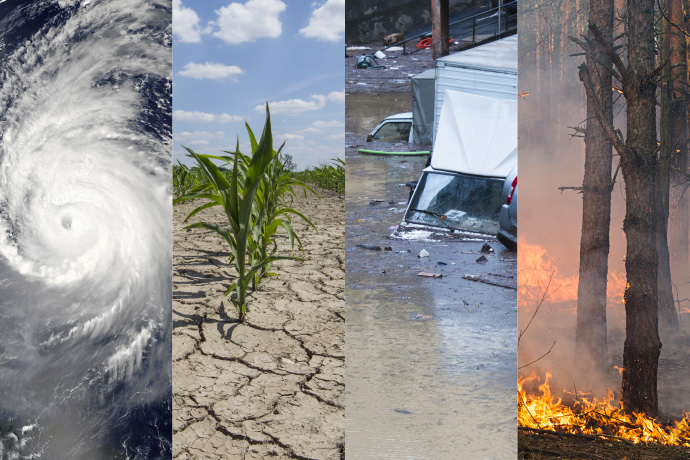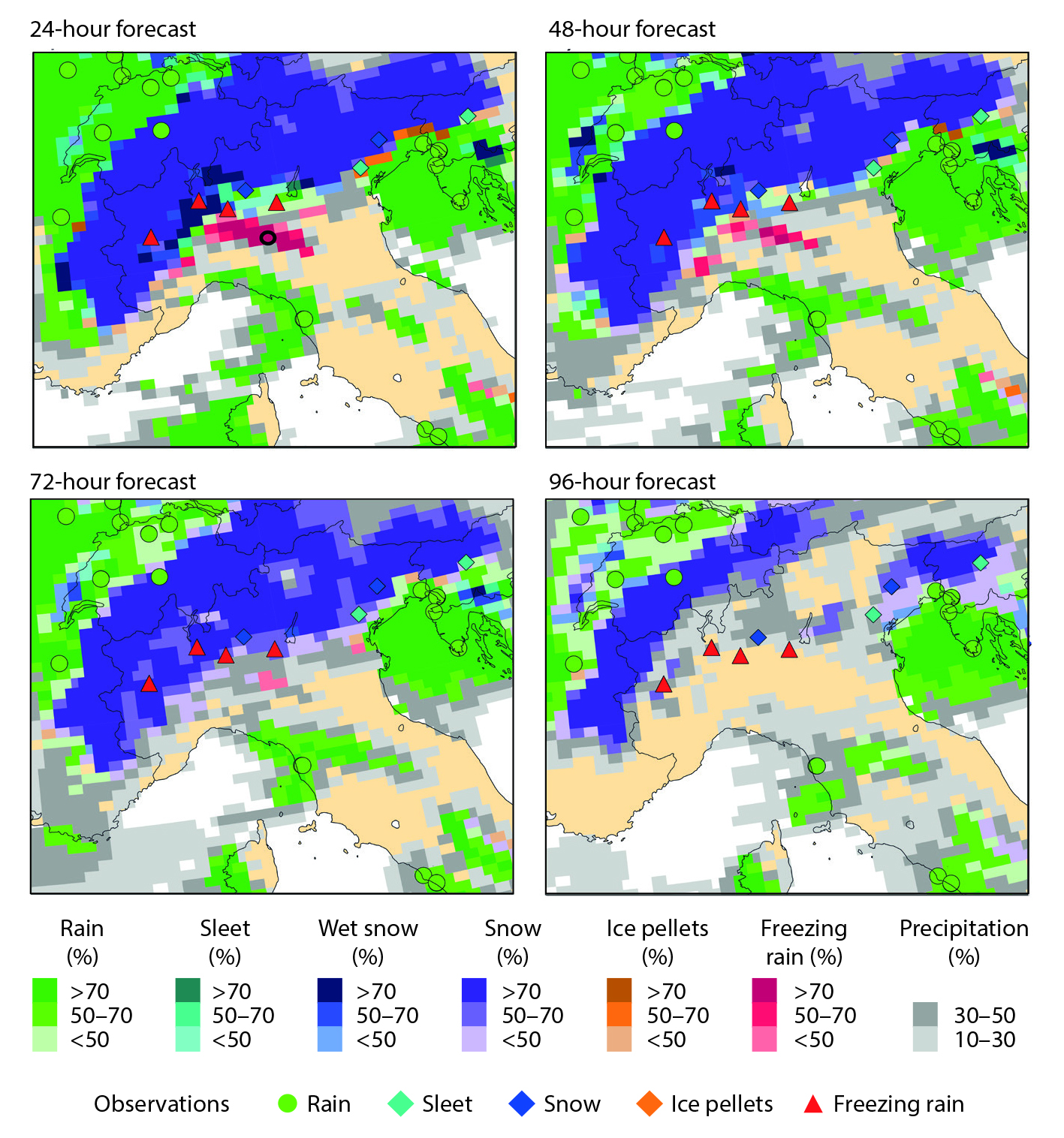

The EU-funded IMPREX and ANYWHERE projects on weather-related hazards have received positive final review reports. ECMWF has contributed to and benefited from the projects.
As part of the Centre’s contributions, ECMWF scientists developed a new forecast product for water vapour flux, which can help forecasters to assess the risk of extreme precipitation. They also created products showing the probability of different precipitation types, such as rain, sleet, snow or freezing rain.
IMPREX
The Horizon 2020 project IMPREX finished in October 2019. It aimed to improve predictions of water-related natural hazards, such as floods and droughts, on a wide range of timescales.
“The methods and tools developed by the project will help Europe to anticipate and respond to future extreme hydrological events,” says ECMWF scientist Linus Magnusson.
The recently released final review report from the European Commission highlights two “success stories” of project outcomes being implemented operationally in the areas of river transport and drinking water treatment. In both cases, ECMWF provided forecast data.

Linus Magnusson was ECMWF’s coordinator for the IMPREX project.
As part of the project, ECMWF provided re-forecast data covering several decades to 12 project partners. Re-forecasts are forecasts with a starting date in the past. They are useful to calibrate forecast products. The project partners incorporated the re-forecast data into product prototypes.
ECMWF also developed an Extreme Forecast Index (EFI) for integrated water vapour flux. This can help forecasters to assess the risk of extreme precipitation.
Other contributions include evaluating seasonal river discharge forecasts for Europe, calibrating precipitation forecasts from a dual-resolution ensemble, and evaluating snow water content in ECMWF analyses.
“IMPREX is a good example of how ECMWF can benefit from its participation in externally funded projects by developing new tools and increasing the uptake of our forecasts,” Linus says.
Extreme Forecast Index maps for storm Dennis. The maps show the Extreme Forecast Index (EFI, shading) and Shift of Tails (SOT, contours) for total precipitation (left) and vertically integrated water vapour flux (right) during storm Dennis valid on 16 February 2020 in day 7 forecasts. The green lines indicate areas where EFI values were larger than 0.9 in day 1 forecasts. The maps show that there was very good predictability for water vapour flux well in advance. This can help forecasters to assess the risk of extreme precipitation. For more details, see the recent ECMWF Newsletter article on storm Dennis.
ANYWHERE
The Horizon 2020 project ANYWHERE ran in parallel with IMPREX. It has created a platform for early warnings of weather-related hazards such as floods, wildfires, heatwaves, droughts and storm surges.
“ANYWHERE finished in 2019, but the project partners are currently investigating ways to continue running the platform,” says ECMWF scientist Fredrik Wetterhall.
The recently released final review report for ANYWHERE notes that the project has provided “results with a significant impact”, including developing an operational Multi Hazard Early Warning System and enhancing existing capabilities for emergency planning and management.

Fredrik Wetterhall coordinated ECMWF’s contribution to ANYWHERE.
As part of the project, ECMWF provided hazard forecasts for wildfires, floods, heatwaves and other extreme weather events.
“The products we developed include meteograms indicating the probability of precipitation type and charts showing the most probable precipitation type,” says ECMWF scientist Estibaliz Gascon.
The forecasts were delivered in real time to a multi-hazard platform, which was successfully tested across Europe for a year.
Just like the water vapour flux product developed for IMPREX, the new products are now available to licensed users in ecCharts.
The project also delivered thermal comfort indices based on ECMWF’s ERA5 reanalysis. This dataset is now available from the Climate Data Store. In addition, ANYWHERE explored new ways to assess multiple concurrent and cascading hazards, such as drought, heatwaves and forest fires.
“ANYWHERE has been very useful for ECMWF because our Member and Co-operating States as well as other users are now benefiting from the products and tools we have developed,” Fredrik says.
The chart below illustrates how probability of precipitation type charts can help to predict weather hazards such as freezing rain.

Map product for a freezing rain event in northern Italy. The forecasts are valid at 00 UTC on 13 January 2017, with starting times of 00 UTC on 12 (top left), 11 (top right), 10 (bottom left) and 9 January (bottom right). SYNOP weather observations for the valid time are shown as symbols. The black circle in the top left map corresponds to a location near Parma, which was severely affected by freezing rain. A first indication of the risk of freezing rain in that location was visible in a forecast 72 hours ahead of the event. For more details, see this ECMWF Newsletter article on the new products for precipitation type probabilities.
Top image credits (left to right): Stocktrek Images/Thinkstock; Taglass/iStock/Thinkstock; fotonazario/iStock/Thinkstock; Gilitukha/iStock/Thinkstock
